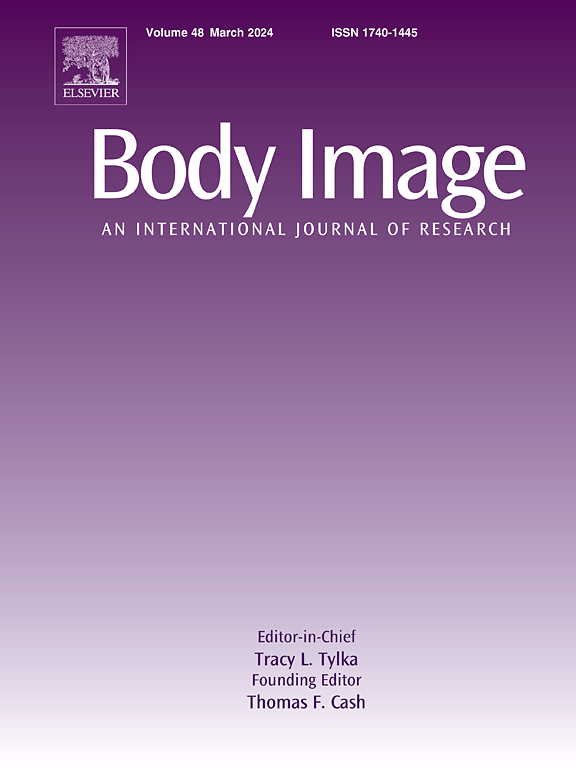#Skin-Lightening: TikTok上最受欢迎的美白产品推广视频的内容分析。
IF 5.2
1区 心理学
Q1 PSYCHIATRY
引用次数: 0
摘要
高度视觉化和外貌化的社交媒体经常展示以公平和白皙为中心的外貌理想,导致向消费者推销危险的非处方美白产品以达到这些理想。我们的研究旨在更好地了解抖音用户在该平台上接触到的美白宣传和产品。我们通过TikTok网站界面(N = 79)对最受欢迎的皮肤美白标签(#skinlightening)中观看次数最多的前100个视频进行了横断面内容分析,并生成了描述性统计数据。结果表明,视频中描绘的大多数人都有女性的性别表达(72.2% %),肤色较浅(49.4% %),并且可能是南亚人(例如印度人,斯里兰卡人)(43.0% %)和非洲裔美国人或黑人(30.4% %)。25-59岁的成年人是最大的群体(40.5 %)。大多数视频没有提供有效性的科学证据(98.7% %),也没有说明推广该产品的影响者的证书(88.6% %)。在TikTok宣传肤色美白的视频中,针对有色人种和女性的做法突显出,身体形象研究人员和从业者有必要评估社交媒体的使用情况,以及对肤色不满带来的风险,同时也呼吁平台向社区植入防止肤色主义理想传播的指导方针。本文章由计算机程序翻译,如有差异,请以英文原文为准。
#Skin-Lightening: A content analysis of the most popular videos promoting skin-lightening products on TikTok
Highly visual and appearance-focused social media often exhibit appearance ideals that center around fairness and whiteness, resulting in the promotion of dangerous over-the-counter skin-lightening products to consumers to achieve such ideals. Our study aims to better understand the skin-lightening claims and products that TikTok users are exposed to on the platform. We conducted a cross-sectional content analysis to examine the top 100 most-viewed videos across the most popular skin-lightening hashtag (#skinlightening) through the TikTok website interface (N = 79) and generated descriptive statistics. Results illustrate that most individuals depicted in videos had a feminine gender expression (72.2 %), lighter skin tones (49.4 %), and were presumably South Asian (e.g., Indian, Sri Lankan) (43.0 %) and African American or Black (30.4 %). Adults ages 25–59 were the largest group depicted (40.5 %). Most videos provided no scientific evidence of efficacy (98.7 %) nor stated the credentials of the influencer promoting the product (88.6 %). The targeting of people of color and women in TikTok videos promoting skin lightening highlights the need for body image researchers and practitioners to assess social media use and its risks relative to skin shade dissatisfaction, as well as calls for platforms to instill community guidelines that prevent the spread of colorist ideals.
求助全文
通过发布文献求助,成功后即可免费获取论文全文。
去求助
来源期刊

Body Image
Multiple-
CiteScore
8.70
自引率
28.80%
发文量
174
期刊介绍:
Body Image is an international, peer-reviewed journal that publishes high-quality, scientific articles on body image and human physical appearance. Body Image is a multi-faceted concept that refers to persons perceptions and attitudes about their own body, particularly but not exclusively its appearance. The journal invites contributions from a broad range of disciplines-psychological science, other social and behavioral sciences, and medical and health sciences. The journal publishes original research articles, brief research reports, theoretical and review papers, and science-based practitioner reports of interest. Dissertation abstracts are also published online, and the journal gives an annual award for the best doctoral dissertation in this field.
 求助内容:
求助内容: 应助结果提醒方式:
应助结果提醒方式:


